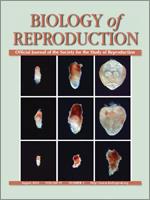Mammalian blastocysts comprise three distinct lineages, namely, trophoblast, hypoblast, and epiblast, which develop into fetal placenta, extraembryonic yolk sac, and embryo proper, respectively. Pluripotent embryonic stem cells, capable of forming all adult cell types, can only be derived from the epiblast. In mouse and rat, this process is promoted by the double inhibition (2i) of mitogen-activated protein kinase kinase (MAP2K), which antagonizes FGF signaling, and glycogen synthase kinase 3 (GSK3), which stimulates the WNT pathway. We investigated variations of the 2i treatment on lineage segregation and pluripotency-related gene expression in bovine blastocysts. In vitro-fertilized embryos were cultured either in the presence of inhibitors of GSK3 (3 μM CHIR) and MAP2K (0.4 vs. 10 μM PD0325901, designated 2i and 2i , respectively) or in 2i/2i with FGFR inhibitor (0.1 μM PD173074, designated 3i [2i and PD173074] and 3i [2i and PD173074]). Compared with 2i, both 2i and 3i potentiated the improvement in blastocyst morphology. Using an automated platform for multiplexed digital mRNA profiling, we simultaneously counted transcripts of 76 candidate genes in bovine blastocysts treated with multiple kinase inhibitors. We show that 2i medium specifically increased FGF4 and NANOG while reducing PDGFRalpha and SOX17 levels. The shift from a hypoblast to an epiblast gene expression signature was confirmed by quantitative PCR. A wide range of functionally related genes, including candidates involved in DNA methylation, were not significantly changed. This well-defined 2i effect was not observed after pharmacologically inhibiting FGF receptor or related MAP kinases (p38, JNK, and ERK5). In summary, our data suggest that increased MAP2K inhibition exerts its pluripotency-promoting effects through as yet unidentified signals.
How to translate text using browser tools
9 July 2014
Increased MAP Kinase Inhibition Enhances Epiblast-Specific Gene Expression in Bovine Blastocysts
Zachariah McLean,
Fanli Meng,
Harold Henderson,
Pavla Turner,
Björn Oback
ACCESS THE FULL ARTICLE

Biology of Reproduction
Vol. 91 • No. 2
August 2014
Vol. 91 • No. 2
August 2014
blastocyst
embryo culture
gene expression
inner cell mass
trophoblast




